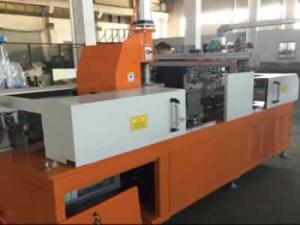
- Home
- Products
- Cable and Wire Making Machine
- Copper Wire Annealing Machine
Copper Wire Annealing Machine
Usage
The copper wire annealing machine is used to slowly cool metal wire as it is processed in order to remove internal stresses and strengthen the finished product. Annealing copper wires creates stronger and longer lasting conducting wires.
Main Features
Temperature is evenly distributed in the annealer for a consistent finished product. The dual tinning tank design allows for the equipment to produce two kinds of tin-coated copper wire simultaneously.
| Machine type | FE-40H/4.5 | FE-40H/6 | FE-40H/7.5 |
| No. of wire | 40 | 40 | 40 |
| Length of Annealing tank (m) | 4.5m | 6m | 7m |
| Wire dia (mm) | 0.08~0.32 | 0.1~0.65 | 0.1~0.7 |
| Pressure regulator (kw) | 0.75 | ||
| Pay-off stand | Brush or overhead | ||
| Tinning type | Hot coating | ||
| Max speed (m/min) | 300m/min | ||
| Pay-off bobbin size (mm) | φ300mm | ||
| Take-up bobbin size | 5"~8" | 5"~10" | 5"~10" |
A copper wire annealing machine is a type of industrial equipment used to heat and cool copper wire in order to increase its ductility, reduce its hardness, and improve its conductivity. The process of annealing involves heating the wire to a specific temperature and then cooling it slowly over time. This can be accomplished using a variety of methods, including electric resistance heating, induction heating, gas heating, or infrared heating.
The annealing process is important for copper wire because it helps to remove any internal stresses that may have developed during the manufacturing process. This allows the wire to be easily bent and formed without breaking, which is essential for many applications.
Copper wire annealing machines can vary in size and design depending on the specific needs of the manufacturer. Some machines are designed for batch processing, while others are designed for continuous operation. Additionally, some machines may include features such as automatic temperature controls, cooling systems, and wire feeding mechanisms to ensure consistent and efficient production.








